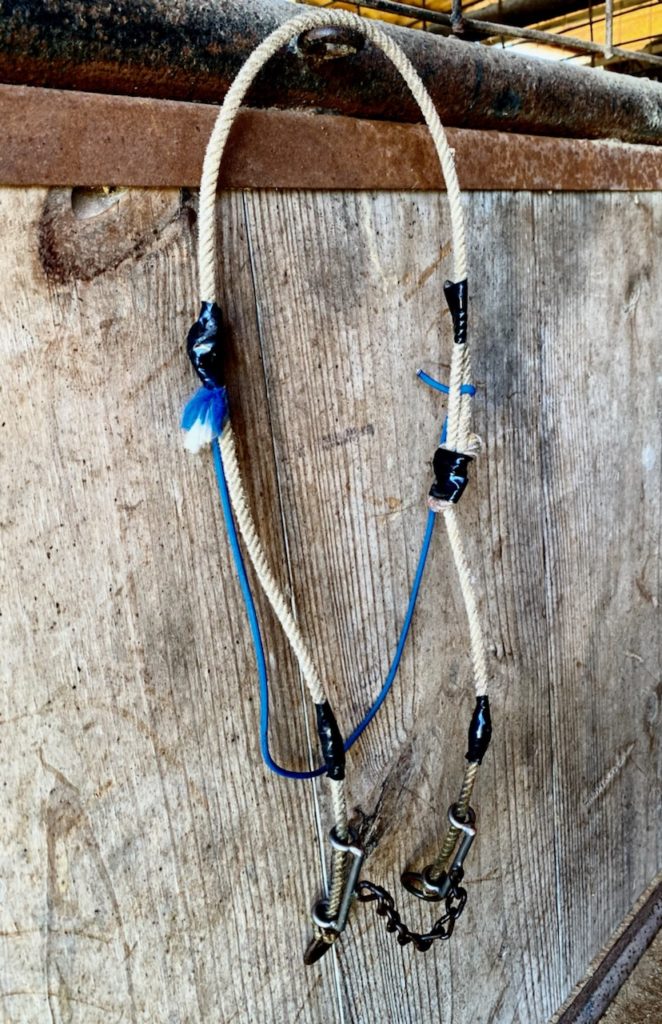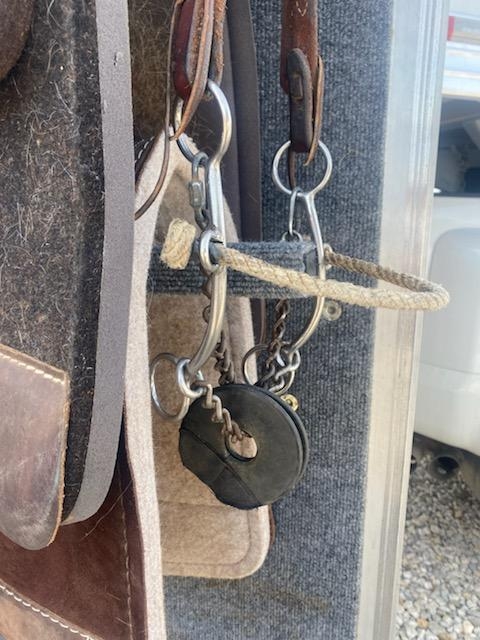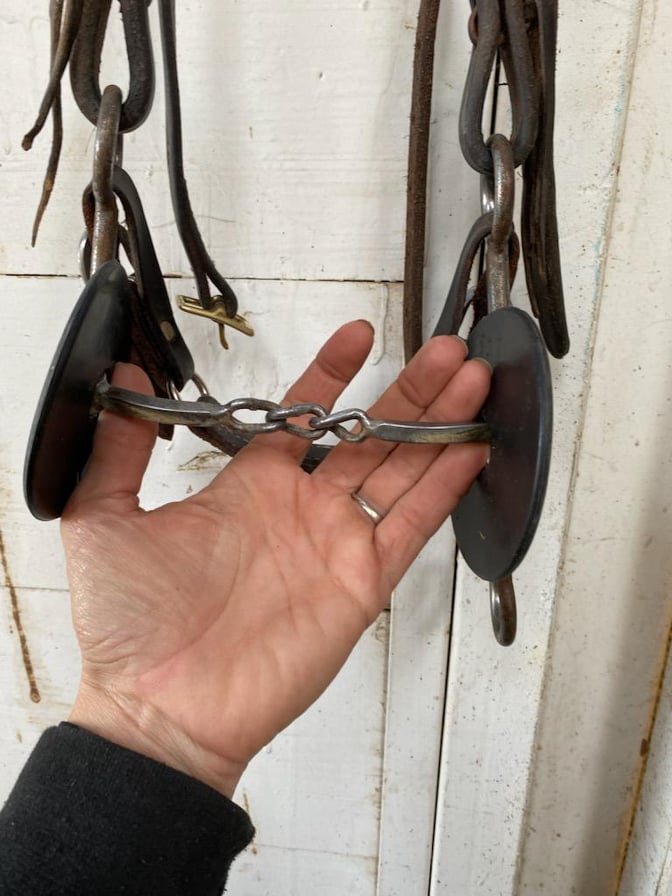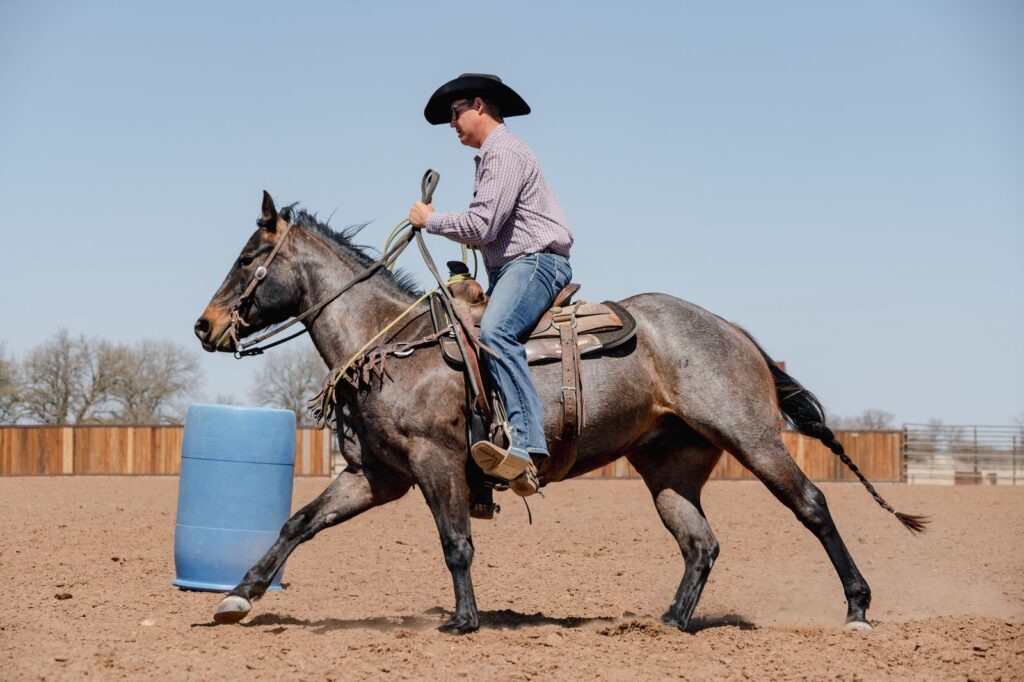Finding the right bit is a beautiful thing, but when it comes to barrel racing bits, the waters can be murky and the quest to finding the perfect headgear can be overwhelming.
Behold, the bit breakdown series. Barrel Racing Magazine caught up with professionals from every corner of the barrel industry to discuss bit mechanics. In the first part, bits were decoded in parts, making it easier for riders to look at any bit and see how it’s going to work in a horse’s mouth.
Now, the bit breakdown is delving into some of the final barrel racing bit basics, including sliding gags, combination noseband bits and the essential gear such as curb straps, bit guards and reins.
Bit Breakdown Part 1: The Anatomy of a Bit
Choosing a Bit for Competition
Finding a bit for barrel racing that fits both horse and rider is important, and the “where” that bit is used essential, too. When going to a loud, busy jackpot or rodeo some riders will “bit up” so they have extra control of their horses. Three-time NFR qualifier and clinician Jane Melby has a different train of thought, though.
“At home I ride my horses in heavier bits than when I compete,” Melby said. “When things get intense, people get nervous, and their hands get heavy. What’s the secret to a barrel horse? They have to have freedom. They have to know they can rock and roll with no resistance. If you have too much bit on, they’re not going to run.”
For Melby, training in a bigger bit at home lightens a horse up, gains their respect and quickens their feet while a bit that is too dull can slow a horse down and make a rider heavier handed. Choose the right bit at home and at the race.
Bit maker Troy Flaharty reminded people to adjust their hands when upgrading in bit severity, too.
“When you put a big bridle in their mouth, you don’t pull harder, you pull lighter,” Flaharty said.

Gag Bits
The term “gag bit,” refers to both the play in the shank of a bit and a Loomis gag, which is a smooth headstall that allows the bit to slide upwards as pressure is applied. As gags are pulled on, it creates a lever-effect and puts downward pressure on the poll. Gag bits elevates the front end too.
“Gags really work on the shoulders,” decorated trainer Sharin Hall said. “If I have a big-made horse that wants to carry its head too low, a gag is going to elevate the shoulders while shill giving lift and bend.”
Brazilian trainer Andre Coelho echoed Hall’s reasoning, saying he liked to move to a gag bit after a snaffle on young horses.
“I have a Dave Elliot bit that’s a sliding gag with a port mouthpiece, and it’s good for horses that are a little ratey going into a barrel,” NFR Qualifier and Barrelracing.com coach Shali Lord said. “It lets me pick up their shoulders and keeps them soft and moving off my hands.”

Something to consider with a gag is the time it takes to engage with a horse’s mouth though, with the reaction getting slower the longer the gag’s mouthpiece is. Five-time NFR Qualifier Cheyenne Wimberly said she stays away from gags in competition.
“I like to run my horses in less of a gag, because I like a quicker reaction,” Wimberly said. “I have pretty light hands and my reaction times with a gag is too slow.”

Combo Noseband
A combination bit combines the mechanics of a hackamore and a bit. The bit can have a gag element or a shank with different mouthpieces.
“If I have a horse that is over-bendy, adding a noseband means the bit won’t work the corners of the mouth first, it’ll work the corners of the mouth and the nose,” Hall said. “It’ll help square a horse up in a turn.”
When Flaharty makes combo bits he avoids making the shank too short, saying a long shank negatively affects where the noseband lays. Flaharty likes the noseband to sit lower, taking into consideration where is “too low” on a horses’ cartilage in their nose.
“I like the noseband because I feel like I get a lot of rate,” Lord said. “My horse tucks his nose a little more in it.”
Hailey Kinsel has won millions of dollars in a Reinsman Johnson combination bit. Kinsel said she likes the lateral positioning the bit lends Sister.

Bit Guard
Adding a bit guard is a precautionary measure — especially when bits have a lot of moving parts like a gag.
“Always have a bit guard on,” Hall said. “If the little bit of skin in the corner of the mouth gets pinched by the bit, it’s going to make the horse brace or elevate when they’re pulled on.”
Bit guards can be leather or rubber, and the choice between them depends on riders’ preference.

Reins
There are hundreds of kinds of reins from braided rope and leather to plain leather. While reins are personal to a riders’ hands, colt starter and roper Justin Briggs prefers heavy leather reins to get the message across.
“I like heavier reins because when I release with a heavy rein, they drop,” Briggs said.
Curb strap
Curb straps can be leather, chain, soft rope or a combination of several things. They’re meant to reinforce the bits’ message and make contact with the jaw after the bit has engaged the corner of the mouth, according to Wimberly.
The opinions on adjustment of curb straps vary, with Wimberly using three fingers in between the jaw and chain curb strap.
Ten-time NFR Qualifier Molly Powell says straps should have a minimum of two fingers between the jaw and strap, adding that the signal from the curb strap will come too soon otherwise.
“Generally, we want two fingers — about an inch — in between the strap or chain when it’s pulled back from the bit. Not when it’s hanging down,” Powell said. “If it’s shorter than that, your horse isn’t even able to feel the mouthpiece and react before the curb strap is hitting them.”
NFR Qualifier Carley Cervi uses a leather curb strap on most of her horses, saying she likes the leathers’ gentler feel.
Want to learn more from the top coaches in the barrel racing industry? BarrelRacing.com has exlusive access to many of the athletes in this article.





